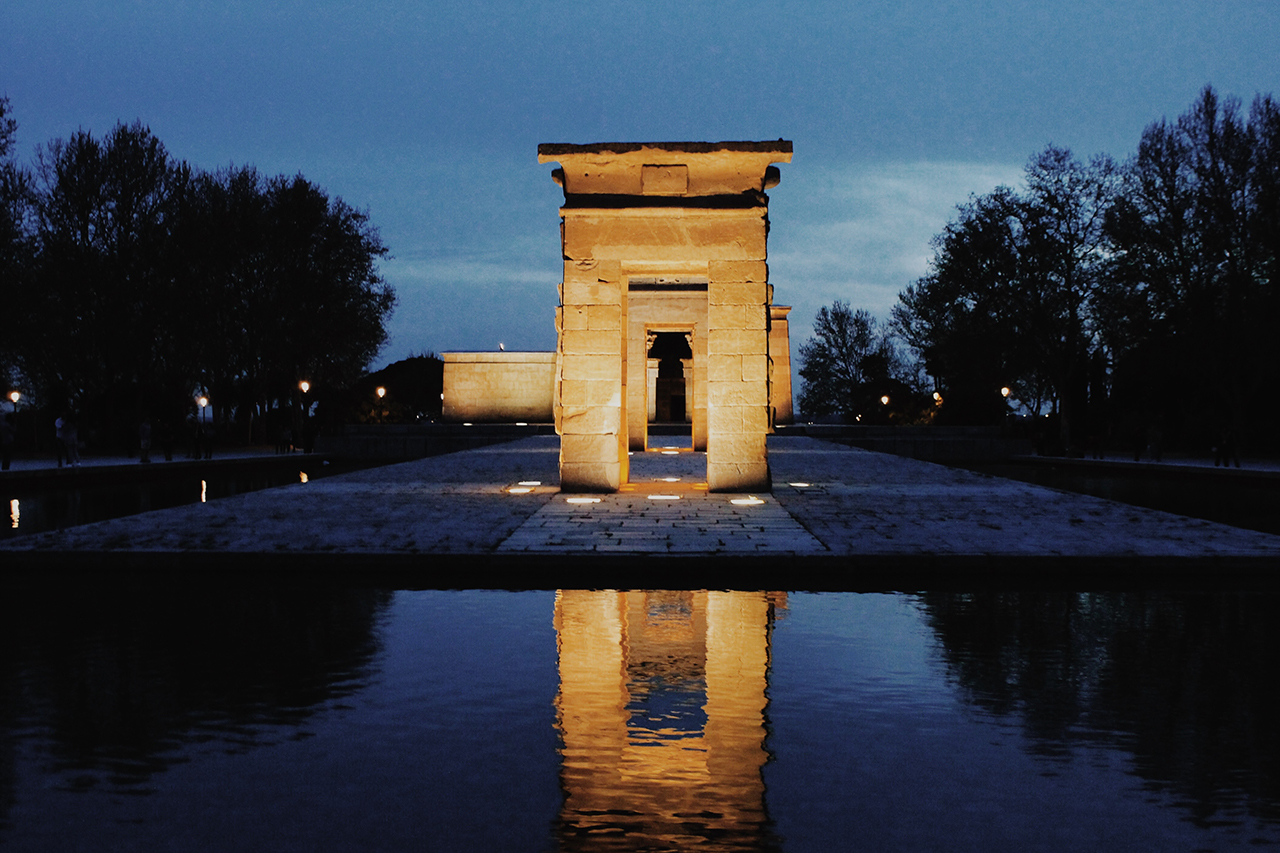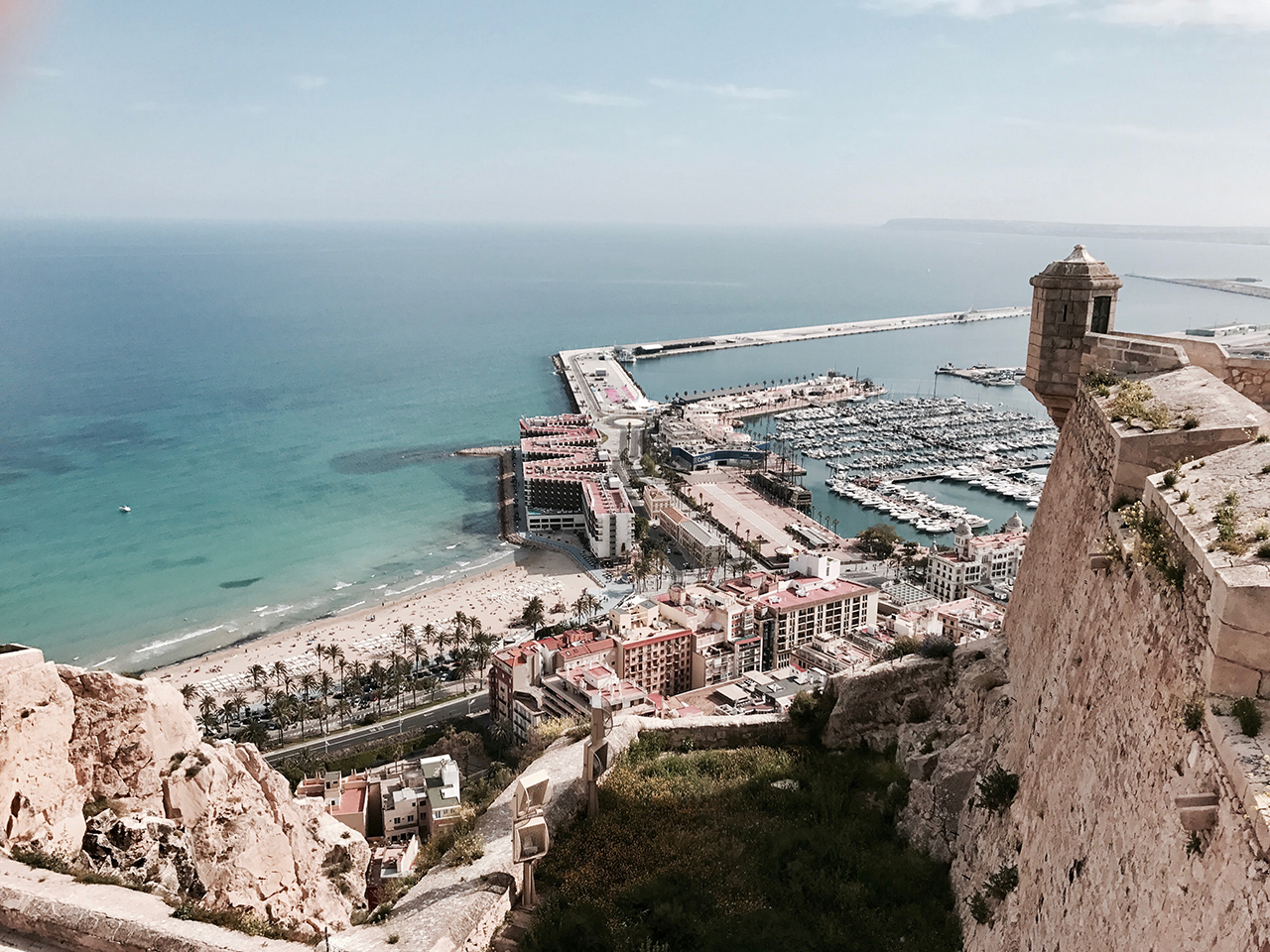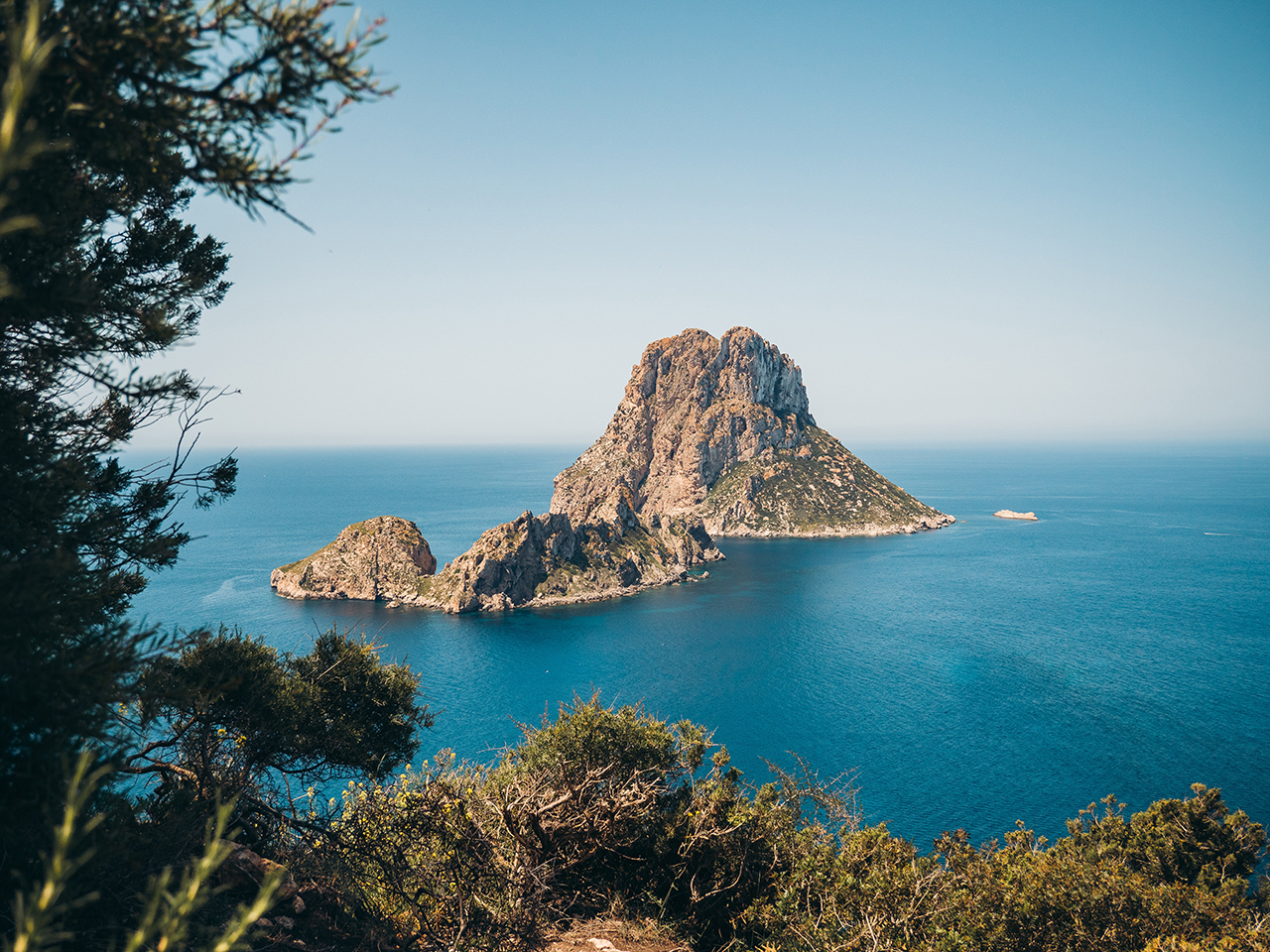Introduction
Lookout points are, undoubtedly, privileged windows into the world around us. These strategically located spots offer views that capture the essence and beauty of a place, allowing visitors to immerse themselves in landscapes that often leave them breathless. From towering cliffs to bustling cities, a lookout can shift our perspective and enrich our touristic experience, offering a moment of pause and reflection in the face of nature’s majesty and human touch.
The significance of lookout points lies not only in the chance to capture a stunning photograph but also in their ability to connect the traveler with the surroundings. It’s a moment when the tourist, whether an eager adventurer or a leisurely stroller, can feel the magnitude of the place they visit, appreciating its history, culture, and geography. Organizations like the Spanish Geography Association (www.aeg.es) often highlight the relevance of these spots in understanding and valuing the Spanish landscape.
Discussing lookout points in Spain is, without a doubt, discussing unparalleled geographical richness. From the green mountains of the north, through the vast plains of the center, to the warm coasts of the south and the islands, both Balearic and Canary with their volcanic features; Spain is a mosaic of landscapes that challenge and delight the eye. This country is not only renowned for its rich history and culture but also for its geographical diversity, which has granted it an impressive array of both natural and man-made lookout points from which to admire its beauty.
Lookout points in northern Spain
Northern Spain, characterized by its green-covered mountains, rugged coastlines, and deep-rooted traditions, houses some of the country’s most breathtaking lookout points. These spots offer panoramic views ranging from secluded beaches bathed by the Cantabrian Sea to peaks that seem to touch the sky. Let’s delve into three of these iconic lookout points that are a must-visit for any landscape and nature enthusiast.
- Mirador del Fito (Asturias)
Located in the heart of Asturias, the Mirador del Fito is one of the most spectacular balconies overlooking the Cantabrian Mountains and the Cantabrian Sea. From its platform, situated over 600 meters above sea level, one can witness the perfect fusion of mountain and sea, with the Picos de Europa standing out on the horizon. This lookout, part of the Sierra del Sueve Natural Park, is easily accessible and has areas designated for relaxation and contemplation. The Asturian Rural Tourism Association (www.asturiasrural.org) highlights it as one of the most visited points of interest in the region.

- Mirador de San Juan de Gaztelugatxe (Basque Country)
San Juan de Gaztelugatxe, with its chapel at the top, has become an icon of the Basque Country and beyond, partly due to its appearance in international TV series. However, beyond its fame, this place hides a magic felt with every step of its ascent. The lookout, located before reaching the chapel, offers a panoramic view of the Basque coast, where cliffs and the sea intertwine. It’s a place of both spiritual and touristic pilgrimage, and its charm lies in the blend of nature and legend. The Basque Country Tourism Association (www.basquecountry-tourism.com) often organizes visits and routes that include this spectacular lookout.

- Mirador de Santa Catalina (Cantabria)
Located in the municipality of Liendo in Cantabria, the Mirador de Santa Catalina is a hidden gem offering imposing views of the Cantabrian coast. The peace felt from this spot, accompanied by the sea breeze and the sound of waves, makes the visit an almost meditative experience. From here, one can observe the San Julián beach and the green hills that characterize the region. Additionally, it’s a strategic point for birdwatching, making it a point of interest for ornithology enthusiasts. The Cantabria Tourism Association (www.turismodecantabria.com) highlights this lookout as one of the most beautiful and lesser-known spots in the region.
These three lookout points in northern Spain are just a sample of the region’s scenic richness. They are spots that invite reflection, awe, and connection with nature in its purest form.
Lookout points in central Spain
Central Spain is characterized by a blend of natural and urban landscapes, from vast plains and mountain ranges to cities brimming with history and imposing architecture. The cities in the center, many with centuries of history, offer lookout points from which it’s possible to appreciate both the architectural wealth and the beauty of the surrounding natural landscapes. Below, we present two highlighted lookout points in this region:
- Mirador de los Canónigos (Segovia)
This lookout, located in the historic center of Segovia, allows for a panoramic view of much of the city and the vast Castilian plain surrounding it. One of its main attractions is the unique perspective it offers of the imposing Segovia Aqueduct, one of the masterpieces of Roman engineering in Spain. The beauty of this lookout doesn’t only lie in its view but also in its surroundings, surrounded by historic buildings and cobblestone streets that transport visitors to another era. Segovia Tourism (www.turismodesegovia.com) offers multiple routes and tours that include this lookout as one of their points of interest. - Mirador del Templo de Debod (Madrid)
A few steps away from the hustle and bustle of central Madrid lies the Temple of Debod, an ancient Egyptian temple donated to Spain in gratitude for its help in preserving monuments threatened by the construction of the Aswan Dam. The lookout near the temple is one of the favorite spots for both Madrileños and tourists to enjoy one of the best views of Madrid’s skyline, especially at sunset. From this point, one can observe iconic places like the Royal Palace and the Almudena Cathedral. Additionally, it’s a popular spot to enjoy sunsets over the city. Madrid Tourism (www.esmadrid.com) highlights this site as one of the best places to get a panoramic view of the Spanish capital.

Both lookouts, although in the heart of historic cities, offer a pause and a breath, allowing visitors to contemplate and appreciate the beauty and cultural richness of this central region of Spain.
Lookout points in southern Spain
Southern Spain, known for its rich cultural heritage, warm climate, and varied landscapes, from rugged sierras to sun-kissed coasts, offers visitors multiple vantage points from which to appreciate its beauty. The lookout points in the south are not just panoramic spots; they are windows to the history, culture, and very essence of Andalusia. Here, we introduce three of the most emblematic lookout points in this region:
- Mirador de San Nicolás (Granada)
Located in the historic Albaicín district, the Mirador de San Nicolás is undoubtedly one of the most iconic spots to enjoy an unparalleled view of the Alhambra, with the Sierra Nevada as a backdrop. The blend of the red from the Nasrid palaces, the white of the Albaicín houses, and the green of the mountains make this spot magical, especially at sunset. Many street artists and musicians choose this place for their performances, adding an even more special touch to the experience. Granada Tourism (www.granadatur.com) provides details on how to get there and the history of the place.

- Mirador de Gibralfaro (Málaga)
Situated atop the Gibralfaro mountain, this lookout offers a panoramic view of Málaga and its port. From here, one can appreciate the perfect symbiosis between historical and modern Málaga. The Alcazaba, the Cathedral, and the modern Muelle Uno port area present themselves to the visitor in a single, expansive panorama. It’s an ideal spot to understand the evolution of a city that has masterfully combined its rich history with modernity. Málaga Tourism (www.malagaturismo.com) provides more information about the lookout and the surrounding castle. - Mirador del Castillo (Cádiz)
Cádiz, the oldest city in Western Europe, offers from the Mirador del Castillo a privileged view of its bay and its historic neighborhoods. From this vantage point, it’s possible to gaze upon a city that has been a meeting point of cultures for over 3,000 years. The contrast between the blue sea and the yellow of the typical Cadiz constructions is a delight for the eyes. The Cádiz Tourism Consortium (www.cadizturismo.com) provides routes and historical details about the city and its main points of interest.
These lookout points in southern Spain are much more than mere panoramic spots. They are places steeped in history, culture, and beauty, inviting visitors to immerse themselves in the stories and legends that have shaped this unique region.
Lookout points in eastern Spain
Eastern Spain, bathed by the waters of the Mediterranean, combines stunning coastlines with inland mountainous landscapes. The provinces of Valencia and Alicante are famous not only for their beaches but also for their picturesque towns, orchards, and sierras. The lookout points in this region offer panoramas that capture the essence of the Valencian Community, a place where land and sea merge in harmony. Below, we highlight two of the most popular lookout points:
- Mirador del Castillo de Santa Bárbara (Alicante)
Overlooking the city of Alicante from a height of 166 meters, the Castillo de Santa Bárbara offers one of the most spectacular panoramas of the Costa Blanca. From its lookout, visitors can enjoy a broad view of the city, its marina, and the beaches that stretch on both sides. Moreover, the contrast between the blue of the Mediterranean Sea and the Alicante skyline is truly captivating. In addition to its panoramic value, the castle has a rich history, having witnessed numerous episodes over the centuries. Alicante Tourism (www.alicanteturismo.com) provides all relevant information about schedules, events, and how to get there.

- Mirador de Coll de Rates (Valencia)
Located inland in the province of Valencia, in the mountain range of the same name, the Mirador de Coll de Rates offers a panoramic view of the Vall de Pop and the surrounding mountains. It’s a popular destination for cycling and hiking enthusiasts, who find challenging routes and, at the same time, landscapes of great beauty. The lookout is a perfect spot to rest and admire nature in all its splendor. On clear days, it’s even possible to see the sea on the horizon. The Provincial Tourism Board of Valencia (www.visitvalencia.com) provides information on activities and routes in the area.
The Valencian Community, with its mix of marine and mountain landscapes, invites visitors to discover corners where natural beauty and history go hand in hand. These lookout points are a testament to this, offering panoramas that remain etched in the memories of those who visit.
Lookout points on the Islands
The Spanish islands, whether in the Balearic archipelago in the Mediterranean or the Canary archipelago in the Atlantic, offer unique landscapes and panoramas. The geological formations, the influence of the sea, and the biodiversity of these territories make their lookout points magical places. Here, we present two must-see lookout points, each on a different island, showcasing the insular diversity and beauty of Spain:
- Mirador de Es Vedrà (Ibiza)
The Mirador de Es Vedrà is one of Ibiza’s most iconic spots. From here, visitors have a privileged view of the islet of Es Vedrà, a rock formation that rises imposingly from the Mediterranean Sea. Numerous legends and myths surround Es Vedrà, and some claim to feel a special energy in the place. The combination of the rock’s magnitude, the water’s color, and the mystical atmosphere make this lookout a must-visit for anyone traveling to Ibiza. For more information about the island and its attractions, one can consult the official Ibiza Travel page (www.ibiza.travel).

- Mirador del Río (Lanzarote)
Designed by artist César Manrique, the Mirador del Río is much more than a panoramic point. Harmoniously integrated into Lanzarote’s natural environment, this lookout offers breathtaking views of the Chinijo Archipelago. The main view is directed towards the island of La Graciosa, with its golden sand beaches and crystal-clear waters. The construction of the lookout, with its spaces carved into the rock and its large windows, allows for a special way to enjoy the landscape. All information about this and other interesting places in Lanzarote is available on the Lanzarote Tourism page (www.turismolanzarote.com).
The Spanish islands, with their geological and cultural richness, are destinations that offer unforgettable experiences. The mentioned lookout points are just a small example of the wonders awaiting visitors in these paradisiacal places.
Tips for visiting lookout points
Lookout points offer panoramic views that etch themselves into our memory. However, to make the most of the experience and ensure the best photographs, it’s essential to consider some tips. Here are some recommendations to make your visit to the lookout points unforgettable:
- Best Times of the Day for Views
The early hours of the morning and the late hours of the afternoon are usually the most suitable for enjoying views from a lookout. During these periods, the light is softer and can produce stunning visual effects, especially during sunrise and sunset. Moreover, these times tend to be less crowded, allowing for a more peaceful experience. If you’re interested in photography, this phenomenon is known as the “golden hour” and is the ideal moment to capture dreamy images. For more information on this topic, you can consult specialized photography websites, such as DZoom (www.dzoom.org.es). - Recommended Equipment (Binoculars, Cameras)
If you’re passionate about panoramic views, carrying good binoculars can make a difference, allowing you to observe details that might go unnoticed to the naked eye. Cameras, whether professional or mobile phones, are essential to capture the marvelous views. Don’t forget to bring an extra battery and a memory card with ample space. If you’re looking for recommendations on optical equipment for your outings, Astronomía y Óptica (www.astronomiayoptica.com) is a reference site. - Safety Precautions
Safety should always be a priority. Ensure you follow the indications and recommendations of the place. Avoid getting too close to the edge or engaging in actions that jeopardize your physical well-being. If the lookout is in a mountainous area or trail, it’s important to wear appropriate footwear and, if necessary, check the path’s condition or the weather conditions before embarking on the route. For information and recommendations on mountain and trail safety, you can consult the Spanish Federation of Mountain and Climbing Sports (www.fedme.es).
Visiting a lookout point can be a transcendental experience that connects you with nature and offers a unique perspective of the surroundings. By following these tips, you’ll ensure a rewarding and safe experience. Enjoy the views!
Conclusion
In an increasingly fast-paced world, lookout points emerge as oases of tranquility, offering a space where we can pause to breathe, reflect, and simply be. These strategic spots allow us to appreciate nature’s majesty and, in many cases, the rich history hidden behind the landscapes we observe.
From great heights, daily concerns seem to diminish, and we realize how small we are compared to the vastness of the world around us. Lookout points are a reminder of the interconnectedness between humanity, history, and nature. They connect us with past generations who, from those same spots, marveled at similar views and reflected on their own lives.
Spain, with its geographical and cultural diversity, houses a multitude of these balconies to the infinite. Each tells a story, whether of natural origin or crafted by human hands. Whether you’re seeking the serenity of coastal landscapes, the majesty of mountains, or the depth of plains, there’s a lookout waiting to be discovered by you.
We invite you to continue exploring, not just the lookout points we’ve mentioned here, but also those lesser-known corners. And, of course, we encourage you to share your experiences, photos, and discoveries.
In essence, lookout points are more than just viewpoints. They are gateways to reflection, connection, and wonder. They allow us, for a moment, to disconnect from routine and immerse ourselves in the vastness of our surroundings. So, the next time you find yourself up high, take a deep breath, gaze at the horizon, and let yourself be carried away.





